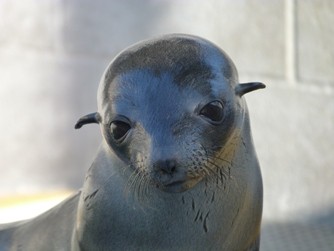Early this year, some 80 Guadalupe fur seals were found stranded off the coast of central California where the U.S. National Oceanic and Atmospheric Administration (NOAA) already classified this event as an "unusual mortality event" that can lead to a significant rise in populations deaths if not given any immediate attention and action.
Scientists consider this eight times higher than usual stranding rates where in the past 20 years, there were only 10 to 20 strandings per year. With this 2015 stranding statistics, 42 fur seals were found dead however, 38 fur seals were alive when they were found but only 11 survived. Surviving fur seals were immediately rehabilitated and released back into the ocean.
According to marine scientists Tenaya Morris from the Marine Mammal Center, these Guadalupe fur seals that were stranded are also pups that are born just last year where all of the 80 stranded seals appeared extremely thin.
Eastern Pacific waters apparently play a crucial role in this stranding event, as waters continue to experience unusually warm temperatures. NOAA scientists also believe that the Guadalupe fur seals' mortality rate is challenged by this warmer climate, according to environmental research director Toby Garfield from the NOAA Southwest Fisheries Science Center. This means that many fish species have already migrated up northern waters, making food for the fur seals more scarce than ever.
NOAA also announced the same event for California sea lions in 2013 due to warming waters, as food became scarce for the animals as well. Even if the two species have different lifestyles, these warming conditions on the west coastal waters of California have a significant effect on their food sources.
However, the fur seals are almost indigenous to the island of Guadalupe in Mexico which is also their main breeding grounds, the population suffered from commercial hunting activities in the past where only 15,000 fur seals remain, according to officials. Garfiled adds that warm water conditions have already changed the range of fish species that the fur seals feed upon.
According to NOAA Fisheries Stranding Coordinator in the West Coast Region, Justin Viezbicke, there will be more attention issued to monitor the fur seals in the next months but not additional protection will be carried out as of now.



























